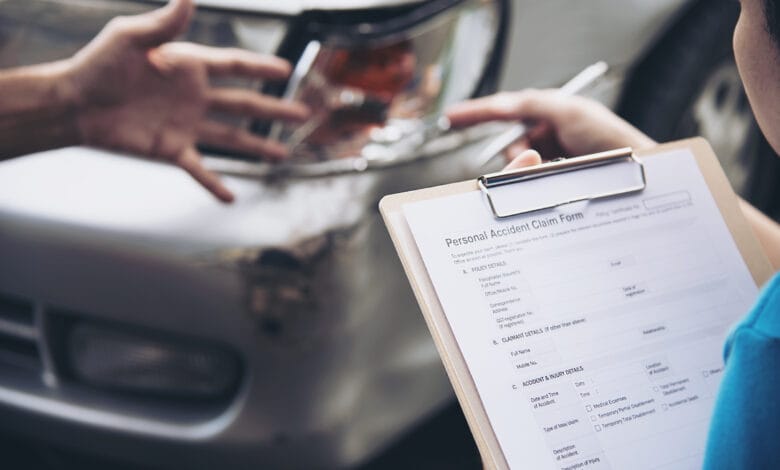
Auto insurance is an essential aspect of owning a vehicle. It not only protects your financial investment but also provides peace of mind while driving. Understanding the basics of auto insurance can help you make informed decisions when purchasing a policy. Here’s what you need to know about auto insurance.
1. What is Auto Insurance?
Auto insurance is a contract between you and an insurance company that provides financial protection in the event of an accident, theft, or damage to your vehicle. In exchange for regular premium payments, your insurer agrees to cover specific losses and liabilities as outlined in your policy.
2. Types of Auto Insurance Coverage
There are several types of coverage options available in auto insurance. Understanding these types can help you select the right policy for your needs:
a. Liability Insurance
Liability insurance is the most basic form of auto insurance and is required in most states. It covers damages and injuries you cause to other people and their property in an accident. There are two main components:
- Bodily Injury Liability: Covers medical expenses, lost wages, and pain and suffering for the other party involved in an accident you caused.
- Property Damage Liability: Covers costs to repair or replace the other party’s property, such as vehicles, buildings, or fences.
b. Collision Coverage
Collision coverage helps pay for repairs to your vehicle after an accident, regardless of who is at fault. This coverage is especially important if you have a newer or more valuable vehicle.
c. Comprehensive Coverage
Comprehensive coverage protects against non-collision-related incidents, such as theft, vandalism, natural disasters, and hitting an animal. This type of coverage helps you recover your losses when something unexpected happens to your vehicle.
d. Uninsured/Underinsured Motorist Coverage
This coverage protects you if you’re involved in an accident with a driver who doesn’t have insurance or lacks sufficient coverage to pay for your damages. It ensures that you’re not left with the financial burden of an accident caused by someone else.
e. Personal Injury Protection (PIP)
PIP, also known as no-fault insurance, covers medical expenses for you and your passengers regardless of who is at fault in an accident. It may also cover lost wages and other related expenses.
3. Factors Affecting Auto Insurance Premiums
Several factors can influence your auto insurance premiums, including:
- Driving Record: A clean driving record typically results in lower premiums, while a history of accidents or violations can increase rates.
- Age and Gender: Young drivers and male drivers often face higher premiums due to statistical risk factors.
- Vehicle Type: The make and model of your vehicle can affect premiums. Luxury or high-performance vehicles generally have higher rates.
- Location: Your location plays a role, as urban areas tend to have higher crime rates and accident frequencies, leading to increased premiums.
- Credit History: In many states, insurers consider your credit score when determining rates, as it can indicate financial responsibility.
4. How to Save on Auto Insurance
Here are some tips to help you save on your auto insurance premiums:
- Shop Around: Compare quotes from multiple insurance providers to find the best rates.
- Bundle Policies: Consider bundling your auto insurance with other types of insurance, such as homeowners or renters insurance, for potential discounts.
- Increase Deductibles: Opting for a higher deductible can lower your premium, but be sure you can afford to pay the deductible in the event of a claim.
- Take Advantage of Discounts: Many insurers offer discounts for safe driving, good grades for students, low mileage, or completing defensive driving courses.
- Review Coverage Regularly: Periodically reassess your coverage needs to ensure you’re not paying for unnecessary extras.
5. The Claims Process
In the event of an accident, understanding the claims process can help you navigate the situation smoothly:
- Stay Safe: Ensure everyone is safe and call for medical assistance if needed.
- Gather Information: Collect details from the other party, including their insurance information, contact details, and vehicle information.
- Document the Scene: Take photos of the accident scene, damages, and any relevant traffic signs or signals.
- Notify Your Insurer: Contact your insurance company as soon as possible to report the accident and initiate the claims process.
- Follow Up: Work with your insurer and provide any necessary documentation as requested.
Conclusion
Auto insurance is a critical component of responsible vehicle ownership. By understanding the different types of coverage, factors affecting premiums, and ways to save, you can make informed choices when purchasing an auto insurance policy. Protecting yourself and your assets on the road starts with having the right insurance coverage.




